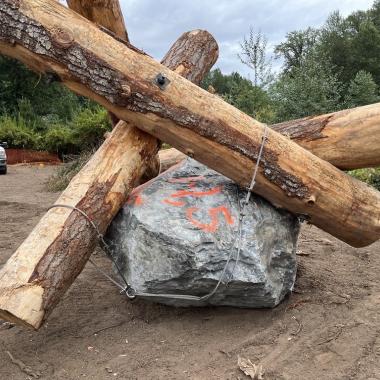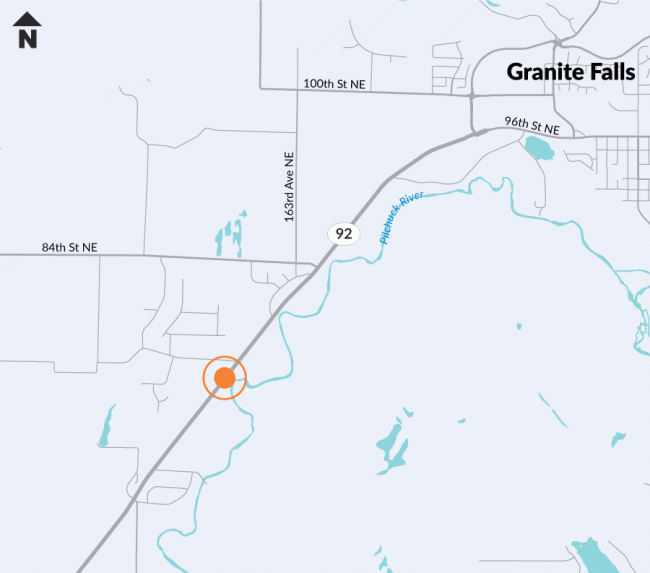In 2009, the Pilchuck River severely eroded its banks south of Granite Falls near SR 92. Over the next few years, a house was swept away by the river and SR 92 was within 40 feet of being undermined. In 2016, WSDOT temporarily rerouted the river to armor the riverbank and added large woody debris for fish habitat. In the years since, the armoring has successfully protected SR 92, but a significant amount of wood debris has washed away.
This project will use log jacks and logs with rock collars to add new large woody debris.
Log Jacks
Log Jacks are individual units made of four to six logs in the shape of a triangular pyramid with a large rock in the center for ballast. The logs are all connected with wire or rope in order to hold their shape. Log jacks are placed together in a large group to improve their ability to withstand the forces of the river.
Rock Collars
Rock collars are also used to anchor logs. This technique ties logs to large rocks with metal bands or collars.
What is CED?
Chronic Environmental Deficiencies, (CED), are locations along the state highway system where recent, frequent and chronic maintenance repairs are causing impacts to fish habitat. CED projects are designed to reduce or eliminate the need for maintenance activities while protecting or enhancing fish habitat.
$633,000 from Pre-existing Funds (PEF)
In 2024, crews working for WSDOT will re-establish fish habitat in the Pilchuck River along State Route 92, just south of Sleepy Hollow Road, near Granite Falls.


